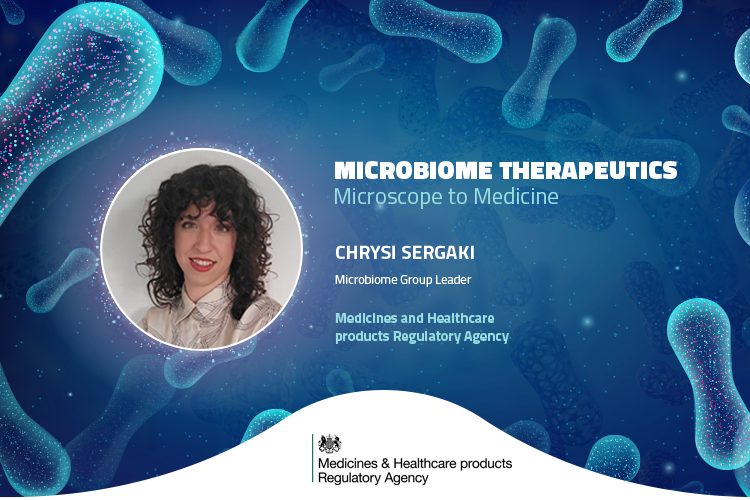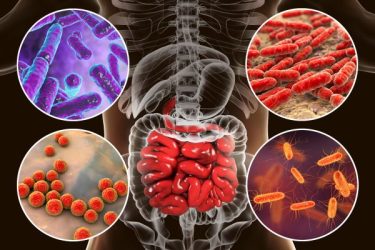Microbiome innovation: have we forgotten the basics?
Posted: 10 January 2024 | Chrysi Sergaki (MHRA) | No comments yet
Here, Chrysi Sergaki from the Medicines and Healthcare products Regulatory Agency (MHRA), UK, explores how innovators and regulators can navigate the challenges affecting the development and regulation of microbiome therapeutics to bring safe and efficacious therapies to patients as soon as possible.


The human microbiome is a key player in our understanding of health and disease. This network of trillions of microorganisms residing in our gut and across our body has opened new avenues in medicine, offering the promise of innovative, minimally invasive therapies. As late-stage clinical development, manufacturing, quality control processes and regulation for microbiome-based treatments evolve, standardisation becomes a critical and complex challenge. This article discusses the complexity of microbiome-based medicinal products and the novel challenges being encountered to characterise and measure this complexity in a robust manner as they progress through the different stages of clinical development that can delay the progress of products to the market.
The gut microbiome: a therapeutic goldmine
The potential of manipulating and harnessing the gut microbiome to treat and prevent disease, has seen a wave of clinical trials emerge”
The human gut is a dynamic ecosystem saturated with a diverse array of bacteria, viruses, fungi and other microorganisms. This intricate network is vital for maintaining gut health, our immune system, and even mental wellbeing. Its disruption has been linked to a wide range of diseases, including inflammatory bowel diseases, cancer, metabolic disorders and neurodegenerative conditions. Recognition of the potential of manipulating and harnessing the gut microbiome to treat and prevent disease, has seen a wave of clinical trials emerge. However, as this field expands, it faces an equally growing array of conceptual and technical challenges.
Conceptual challenges: basic ecosystem biology and microbiology
The basis of many challenges is the dynamic nature of the microbiome, which is vastly underexplored and not well understood. The microbiome is an ever-changing ecosystem, influenced by changes in our diet, exercise, environment and health status, to name a few. It is essential to recognise that changes in the microbiome’s composition and function are not exclusive to individuals with diseases. This ecosystem sensitivity, along with the complexity of the human body and lifestyle, makes it difficult to understand how the microbiome is affected by its environment and how these changes impact us.
All microbiomes, even healthy ones, can contain pathogenic microbes”
To add to the complexity, the dynamic nature of microbes means that beneficial microbes can become pathogenic and vice versa depending upon the environment in which they exist.1 All microbiomes, even healthy ones, can contain pathogenic microbes, without causing inflammation or infection, such as Clostridium difficile. C. difficile can cause serious infections for some but has also been found in the microbiomes of healthy individuals with no problems. The potential of each microbe to become pathogenic can also be dictated by the environment, even leading to dormancy, frequently overlooked by strictly DNA-based investigation. This lack of comprehensive understanding of microbiome ecology and dynamics affects all stages of innovation; from describing the mechanism of action, to dosing, toxicity, efficacy and ultimately the success of clinical trials.


Disturbing an ecosystem can lead to loss of biodiversity, population imbalances, habitat destruction, changes in function (eg, metabolism and nutrient cycling), loss of resilience and increased vulnerability to disease.2 Manipulating the microbiome requires a level of ecosystem disturbance and predicting and controlling the effect of these interventions – both on the microbiome and the human body – requires better understanding of the microbial ecology of the human body, which is not a simple task.
Beyond bacteria, the microbiome is home to a less-explored realm of fungi, archaea, viruses and parasites that have a role to play within the ecosystem, which is not well studied or understood. This dynamic microbial interaction includes competition for nutrients, cross-feeding and genetic exchange, among other interactions, contributing to the fluctuation in microbiome composition and functionality. It is crucial to emphasise that the dynamics of these events are highly complex, interconnected and, notably, vary significantly from person to person.
Quality control: can we trust our data?
Lack of confidence in data has increased concerns about the field over the years”
Technical challenges make understanding the microbiome as an ecosystem even more difficult. While the evolution of omics technologies has revolutionised microbiome research, the data generated is compromised by the inherent bias of these methodologies and the lack of effective standardisation. From sampling and storage to extraction and analysis, methods can vary and give different results, leading to contradictory findings.3 This lack of confidence in data has increased concerns about the field over the years, a problem which becomes even greater for understudied microbes like fungi and viruses.
As technology progresses, we have started questioning the taxonomy and the definition of strain, as well as the functional capabilities of microbes, considering genome structure, phenotypic plasticity, functional redundancy and the regulation of gene expression at a fundamental level.4 This not only poses issues for intellectual property (IP) but also regulatory challenges as the product progresses to clinical trials.
The imperative for standardisation


- Confidence in data allowing for more robust evidence of therapeutic efficacy from clinical trials
- Robust evidence that can reduce uncertainties for regulators and facilitate faster approvals, ultimately accelerating the availability of these treatments for patients
- Assurance that therapies consistently meet quality and safety standards, protecting recipients from potential harm and/or unreliable treatments
- Fostering of trust in the industry, attracting investment and promoting innovation.
Clinical trials: ensuring safe and effective therapies
The diversity of the human microbiome between individuals, health state and even time, complicates trial design and data interpretation”
Late-stage clinical development for microbiome therapies involves designing and conducting robust clinical trials. However, the diversity of the human microbiome between individuals, health state and even time, complicates trial design and data interpretation. Furthermore, there is growing scrutiny surrounding preclinical-trial data due to the over-reporting of transferable disease phenotypes between species and relevance of the data produced to human health.
It is critical that innovators address how the quality and consistency of the product should be thoroughly evaluated, and it is their responsibility to justify and establish reporting procedures to achieve this. It has been shown that the microbiome, and even microbiome-associated particles, may cause a varied immune response and toxicity from person to person. Dosing must therefore be tightly controlled, using a risk-based approach and considering the target population. Ultimately, clinical trials are expected to have variable results due to the nature of the microbiome, yet it is imperative to have confidence that the data is true, accurate and reliable, while working towards understanding the sources of variability in order to progress the product to the market.
Open and honest discussion with regulators is of utmost importance…”
To address these challenges, the research community must work collaboratively to develop agreed upon criteria, eg, for inclusion and exclusion, as well as controlling and/or accounting for cofounding factors and utilising standardised reporting. Open and honest discussion with regulators is of utmost importance and will help ensure that clinical trial results are interpretable and trustworthy.
Navigating the regulatory landscape for microbiome therapeutics
The regulatory landscape for microbiome therapies is evolving rapidly, with multiple initiatives across the world. Recognising the challenges of the field, regulators often welcome open dialogue with innovators from the earliest stages of product development. Openly discussing the conceptual and technical challenges of the field, describing the evidence-based decision-making processes, providing robust rationale, reliable data, comprehensive risk management and analysis can streamline the approval process for both regulators and innovators.
Innovators are the experts of their field, whereas the expertise of regulators lies in reviewing the evidence”
Innovators have a responsibility to provide evidence that helps regulators make informed decisions, as well as to improve the evidence as technology progresses, and to challenge unsuitable methodologies. Innovators are the experts of their field, whereas the expertise of regulators lies in reviewing the evidence, not on deciding how the science should be done.
Concerted effort needed to accelerate microbiome therapies


Standardisation is not an option; it is an imperative. Only through the establishment of clear, internationally recognised standards can we ensure the safe, effective and consistent development of microbiome therapies.
Collaborative efforts among researchers, manufacturers, regulators and clinicians will create the foundation for the future of microbiome therapeutics, unlocking the full potential of this exciting field for the benefit of patients worldwide.
In our aim to unlock its full potential, we need to go back to basics and think about the microbiome as the complex and dynamic ecosystem it is”
Finally, in our aim to unlock its full potential, we need to go back to basics and think about the microbiome as the complex and dynamic ecosystem it is. Microbiome innovators should pave the way by thinking outside the box and facing the challenges headfirst, acknowledging the innate limitations of current approaches. Regulators across the world realise these challenges and are increasingly encouraging active discourse at the earliest stages of the application process. The goal is – or should be – common after all: to bring novel, safe and efficacious therapeutics to patients as soon as possible.
About the author
Chrysi Sergaki is the Microbiome Group Leader at the Medicines and Healthcare products Regulatory Agency (MHRA), UK, leading the microbiome standardisation programme, as well as research projects on microbiome, AMR, microbial diagnostics and cancer immunotherapy irAEs. She has led the establishment of the first three WHO International Reference Reagents for the microbiome, by co-ordinating international collaborative studies and the development of a guidance document for microbe-based medicinal products, to facilitate the regulatory process and ensure patient safety. Before joining the MHRA, Chrysi completed her PhD at the University of Warwick, UK, researching microbial interactions and their impact on the host.
References
- Kamada N, Kim YG , Sham HP, et al. Regulated Virulence Controls the Ability of a Pathogen to Compete with the Gut Microbiota. Science [Internet]. 2012. [cited 2023 Dec];336(6086):1325–9. Available from: https://science.sciencemag.org/content/336/6086/1325.long
- A Landscape of Opportunities for Microbial Ecology Research [Internet]. 2020. frontiersin.org. [cited 2023 Dec] Available from: https://www.frontiersin.org/articles/10.3389/fmicb.2020.561427/full
- Nearing JT, Comeau AM, Langille MGI. Identifying biases and their potential solutions in human microbiome studies. Microbiome. 2021 May 18;9(1).
- Van Rossum T, Ferretti P, Maistrenko OM, Bork P. Diversity within species: interpreting strains in microbiomes. Nature Reviews Microbiology [Internet]. 2020 [cited 2023 Dec] 4;1–16. Available from: https://www.nature.com/articles/s41579-020-0368-1
- WHO/BS/2022.2416: A WHO collaborative study to evaluate the candidate 1st WHO International Reference Reagents for Gut Microbiome analysis by Next-Generation Sequencing [Internet]. www.who.int. [cited 2023Dec]. Available from: https://www.who.int/publications/m/item/who-bs-2022.2416
- WHO/BS/2023.2455 WHO 1st Reference Reagent for DNA extraction of gut microbiome [Internet]. www.who.int. [cited 2023Dec]. Available from: https://www.who.int/publications/m/item/who-bs-2023.2455









